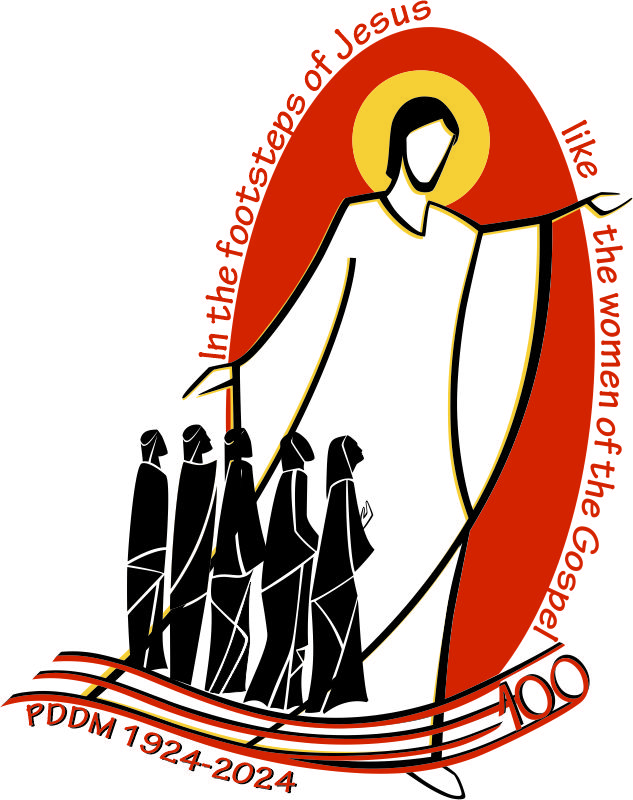Logo

The Logo for the commemoration of the Centennial is simple and consists of four principal elements: Jesus Master, the disciples, the path marked by lines upon which they walk and the number 100.
The figure of Jesus Master is the principal image; he is the center and the goal of our vocation and mission. Discipleship is daily learning. It requires walking, following the Master because it is in his Word, in his teachings, in his examples, that we learn to be disciples. «Drawn by love of Jesus Christ we cling to him freely and personally. We enter into the new and living Way which leads us to the Father, to the Truth which sets us free and to the Life which fills us with joy» (RV13). He has made, makes, and continues to make history with each of the disciples who have followed him, who follow him and who will follow him.
The text: “In the footsteps of Jesus like the women of the Gospel”, the theme of the Centennial, surrounds the almond shape which encircles the figure of the Master. The almond shape indicates the mystery of Christ in his divine and human nature and the continual renewal of life in Christ, the rebirth each day, for every Christian and the collective, community life.
«The grace of conformation to Christ is the work of the Holy Spirit, to the glory of the Father, which leads us toward Eternity» (Introduction PGF). Although the symbol of the Holy Spirit is not present, there is the dynamics of his action like the wind, a force that gives movement to the clothing of the disciples. The Spirit guides each one of us and the Congregation. He gives the courage to walk with joy, despite the events of our history.
With one hand, Christ the Master is blessing: we can see in this gesture all of the blessings, all the graces bestowed upon us in these 100 years. «Everything comes from God; everything leads to the Magnificat!» (RV11). The hand in the front indicates the way, invites us to follow, to trust in him: “Do not be afraid. I am with you!” ( RV12).
The feminine images are outlines that do not identify specific persons, but every single disciple, from all continents and ethnicities. They are in black to distinguish them, but also to symbolize that, realistically, we are faint shadows of what we are called to be.
The three lines that make up the path allude to the dynamics of the following of Jesus who is chaste, poor and obedient, to the mission which springs from Easter: at the service of the Eucharist, the Priesthood and the Liturgy.
There are three lines, one of which gives origin to a fourth line, to remind us that creative fidelity to the charism received from Father Alberione is lived in its constant development, in harmony with the body of Christ which is in continual growth (cf MR 11).